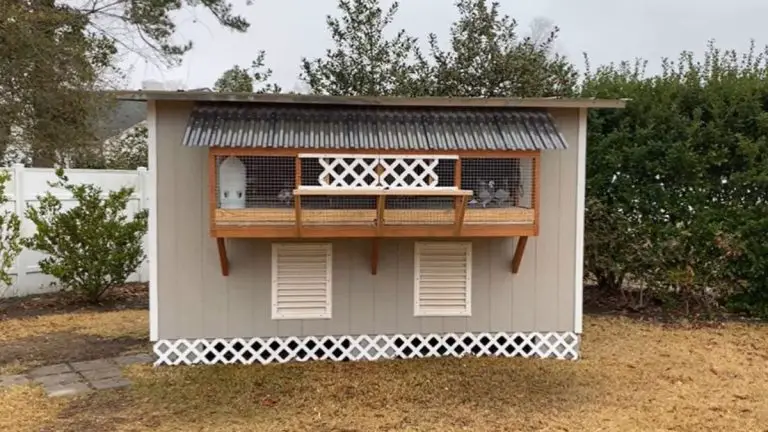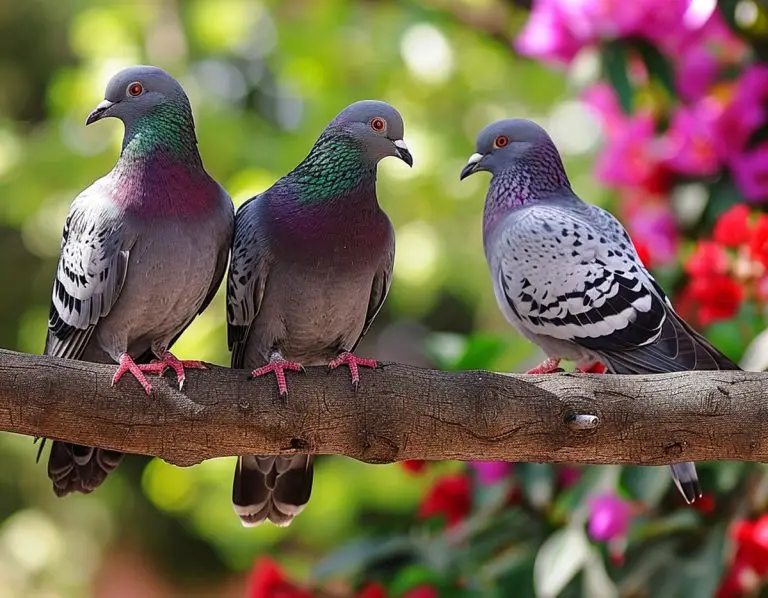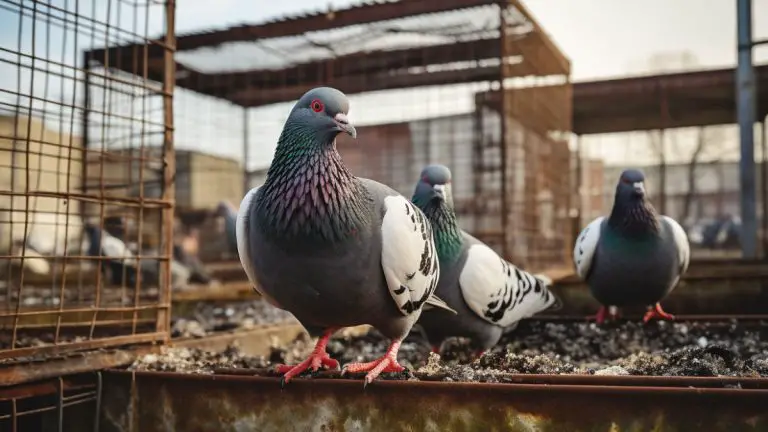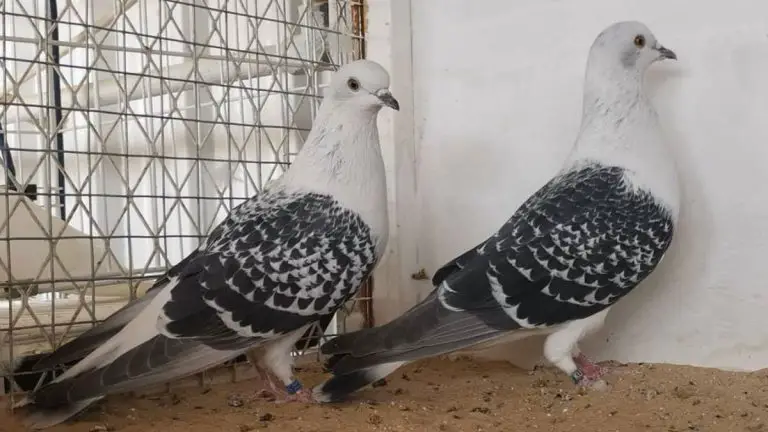What Does a Baby Pigeon Look Like? Why Don’t You See Them?
Pigeons, also known as rock doves, are known for their distinctive appearance and ability to thrive in cities. However, one aspect of the pigeon’s life cycle is often overlooked – their babies, also known as squabs.
So, What does a baby pigeon look like? Why don’t you see them? Baby pigeons, or squabs, are born bald and with closed eyes. Adult pigeons are also very protective of their young and often hide their nests in hard-to-reach places until they mature. This, combined with the camouflage provided by the squabs’ downy feathers, makes them difficult to spot.
If you are interested in learning more about these fascinating birds and why you don’t see them often. Keep reading to discover the hidden world of baby pigeons.
What Does a Baby Pigeon Look Like? Why Don’t You See Them?

Here is what these young birds look like and why you never see them:
Physical Characteristics of Baby Pigeons
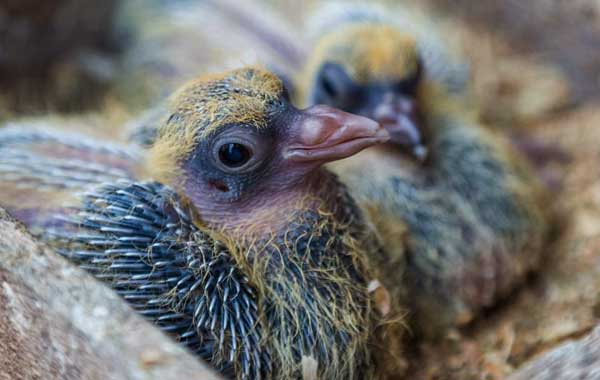
Squabs have the following body characteristics:
- Size and weight: Baby pigeons, also known as squabs, are small when they are born, typically measuring around 3 to 5 inches in length. They weigh 12 to 15 ounces. They have a small head, a short beak, and a plump, round body. Their legs and feet are tiny and not fully developed.
- Color and eyes: They are born with pale pink or gray skin, and their feathers appear as they grow. The feathers are usually a light gray, yellow, or brown and are soft and downy to the touch.
Their eyes are closed for the first week and, when open, are usually blue. As they grow, their feathers will start to darken and develop the characteristic coloration of adult pigeons.
- Markings: Squabs do not have the distinctive markings that adult pigeons have, such as an iridescent neck or green and purple sheen on their feathers. They don’t have any banding or spotting on their feathers.
- Voice: Baby pigeons do not have a developed vocalization. They communicate through peeping sounds, and adults respond to them.
Comparison of Squabs with Adults
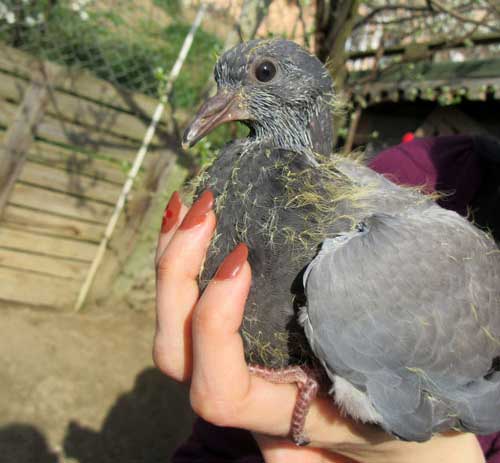
Squabs differ from adults in the following ways
Physical differences:
- Size: Squabs have smaller heads, short beaks, and plump round bodies than adult pigeons. Adult pigeons have larger heads, longer beaks, and more developed wings.
- Color: Squabs are born with pale pink or gray skin, and their feathers are usually light gray or brown. Adult pigeons have distinctive plumage, ranging from gray to white or even multicolored, and may have an iridescent neck or a green and purple sheen on their feathers.
- Markings: Squabs do not have the distinctive markings that adult pigeons have, such as banding or spotting on their feathers.
- Skeletal structure: Squabs have a less developed skeletal structure, and their legs and feet are smaller and not fully developed. Adult pigeons have a more developed skeletal structure, and their legs and feet are more robust.
Behavioral differences:
- Activity level: Squabs are less active than adult pigeons and spend most of their time in the nest being cared for by their parents. Adult pigeons are more independent and can often be seen foraging for food or flying around.
- Independence: Squabs are dependent on their parents for food, care, and protection. In contrast, adult pigeons are independent and can breed and care for their offspring.
- Voice: Baby pigeons do not have a developed vocalization. They communicate through peeping sounds, and adults respond to them. On the contrary, adult pigeons have various vocalizations and calls.
Why do you Never See Them?

You won’t see a baby pigeon because of the following reasons:
- Nesting habits: Adult pigeons are very protective of their young and often hide their nests in hard-to-reach places, such as on ledges or crevices, to keep them safe from predators. This makes it difficult for people to spot baby pigeons.
- Camouflage: The downy feathers of baby pigeons provide camouflage, making them blend in with their surroundings and difficult to spot.
- Short lifespan: Squabs typically fledge or leave the nest at around 4-5 weeks old, which is a relatively short amount of time. People may not have the opportunity to see them before they have grown into adult pigeons.
- Limited Movement: Squabs spend most of their time in the nest, can’t move around much, and are fed by their parents. This means they are not out and about like adult pigeons and are less likely to be seen.
- Urban environment: Pigeons are adaptable birds and can live close to humans. This can make it harder to spot them as they blend in with the urban environment.
Pigeon Baby Growth and Milking
As the squab, or baby pigeon, grows, it will continue to depend on its parents for food and care. The parents will continue to feed the squab “pigeon milk,” which is a protein-rich secretion.
Pigeon milk is produced in a gland located in the crop of the parents and is fed to the squab via regurgitation. The squab will continue to feed on pigeon milk for the first few days of its life.
As it grows, it will start to consume more solid food, such as seeds and grains. During this time, the squab will also begin to develop its feathers. The first feathers to appear are the down feathers, which are soft and fluffy and provide insulation for the squab.
As the squab grows, it will develop more feathers, and within a few weeks, it will have developed enough feathers to fly. The parents will then start to spend less time caring for it.
The squab will start to explore its surroundings and learn to forage for food. This process typically takes around 4-5 weeks, at which point the squab will fledge the nest and become an independent adult pigeon.
FAQs
Here are common questions and answers about the topic:
Adult pigeons are very protective of their young and often hide their nests in hard-to-reach places. If you’re interested in seeing a baby pigeon, or squab, one option is to look for pigeon nests in your local area.
Pigeons are adaptable birds and can be found in various urban environments, such as parks, cities, and buildings. Also, look for places where pigeons are known to congregate, such as on ledges, in crevices, or under bridges. Once you’ve located a nest, you may be able to spot the squabs inside.
No. Baby pigeons, or squabs, cannot fly until they have developed enough feathers and strength. This typically takes around 4-5 weeks. After fledging, they will learn how to fly and forage for food on their own.
Conclusion
The above information has settled the question, what does a baby pigeon look like? Why don’t you see them? Squabs live in nests located in remote areas until they can fly and fend themselves.
The growth and development of squabs is a fascinating aspect of the life cycle of these birds and can be observed by locating their nests. However, it’s essential to remember to do it with respect for the birds and their natural habitat. Never disturb a nest or handle wild birds without proper training and permission.

